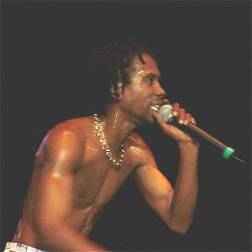Crop Over is a summer festival held in Barbados. Originally it was a post-harvest festival held after the sugar season, but it was re-introduced in the 1970s as a carnival-like event.
Since its re-introduction, the festival has grown considerably to where it is now one of the main cultural events in the Barbadian calendar. Over the years, many songs have been released for Crop Over that fall into two genres:
- Calypso
- Soca
The calypsos are usually written for the calypso competition while the soca songs are for the parties and the street celebration known as Kadooment.
I will now give a Top 10 Crop Over songs of all time where I seek to narrow down the thousands of songs that have been released in these two genres. To get on this list, a song had to be: - A prototype of a particular period
- A song that went on to change how music was being made in Crop Over.
So here is my Top 10 (not in any particular order).
Tek Off Something – Stiffy – 2016
1. Tek Off Something is the newest song on this list. It gets its place because it represents the Bashment Soca form of soca which is the favoured Crop Over genre by the current youth in Barbados. Bashment Soca is really a re-emergence of Bajan Dub from the 1990s, and the music was then re-branded and given a competition within the Crop Over Festival. Stiffy won the first-ever Bashment Soca competition with this song. Tek Off Something gets on the list, therefore, because it is a prototype of Bashment Soca. I actually call it Bashment Soca II because the original Bashment Soca I is different to this newer form.
Hard Wine – Lil Rick – 1996
2. Hard Wine is a song from the mid-1990s sung by Crop Over giant and Bajan cultural icon Lil Rick. This song gains its place because of the influence it had on later producers and singers. It was raw in its production and had Lil Rick chanting/singing in Bajan dialect. It started a whole sub-genre, Bashment Soca I, where bed-room producers came to the game with raw production and songs sung in Bajan dialect. This type of Bashment Soca was popular for another ten years and formed part of the soundtrack to Crop Overs of the early 2000s.
The Country Ain’t Well – RPB – 1989
3. The Country Ain’t Well was part of the calypso competition, called Pic-O-De Crop in 1989. It gets on the list because it represents the calypso writing style of RPB, who had the most success in Bajan calypso competitions. The RPB style is based around simple, singable melodies and lyrics that display the use of metaphor. This song is a prototype Bag and helped him win the competition in 1989.
West Indian Politician – Gabby – 1985
4. The other influential way of composing calypso is the way it has been done by the Mighty Gabby. Unlike RPB, the Gabby method is full of melodic complexity in comparison to other calypsos. Gabby loves chromatic notes, and he also varies the rhythm of his melodies between verses as well. This way has also been very successful at the calypso competition, with Gabby being the second-highest winner. Basically, Bajan calypsonians either utilize the Bag style or the RPB style in making their music.
Ragamuffin – Square One with Alison Hinds – 1996
5. Alison has been one of the leading female voices in soca, a genre that has been male-dominated since its inception. Ragamuffin represents the type of fast soca which emerged in the mid-1990s that was more sung when compared with the Bashment Soca I. This type of soca, like Bashment Soca I did not feature a lot of instruments and was considerably quicker than the other types of Soca, which were popular in the 1980s. Although Obadele was the first to win the most popular on the road with this type of soca, Raggamuffin because Alison Hinds sang it, is not only a prototype of this quicker soca in the 1990s; it also is the prototype female artist within soca and thus an automatic entry on this Top 10 list.
Pump Me Up – Krosfyah with Edwin Yearwood – 1995
6. The slower type of soca, known as Ragga Soca, is very popular at Crop Over. Though it has been renamed under the influence of Trinidad to Groovy Soca, it still forms a critical element of modern parties. The first soca of this type is Pump Me Up by Edwin Yearwood, which fused dancehall with soca music. This slower tempo, plus the way Edwin sings, was imitated by many and went on to have considerable influence in all carnivals in the English-speaking Caribbean. Pump Me Up was this a no-brainer inclusion to the Top 10 list.
Mr T – Grynner – 1983
7. Before the considerable changes in soca music in the 1990s, Grynner was the dominant sound of soca music in Barbados in the 1980s. Grynner’s sound was built in Eddy Grant’s Blue Wave Studio, and it basically involved a backbeat which is found across many genres as the drum pattern and then calypso percussion on top. In addition, Grynner’s unique Bajan voice carries the melody. This combination was very popular, and Mr T. represents this sound to a T.
Ragga Ragga – RPB – 1993
8. Although Pump Me Up was the most influential of the Ragga Soca songs, the song that opened the door of Jamaican dancehall mixed with soca was Ragga Ragga. This song gave Ragga Soca its name and is a definite inclusion on this list. It is on this, however, to represent the regional influence of songs released in Crop Over as Ragga Ragga was very popular in the Caribbean region of Colombia and Panama. It probably remains one of the most recognizable songs from Crop Over in that region and has a redone Spanish version (reggae en Espanol).
My Car Brek Down – Contone – 2006
9. Contone was a car-washer and part-time singer. His song My Car Brek Down was the most popular Bashment Soca I song ever and marked the end of that particular era. Some may consider this song a strange inclusion, but in my time on stage, I have never seen such a reaction from an artist as Contone received at that time.
All of We – Peter Ram – 2015
10. In 2021, the other sound that dominates Crop Over and Bashment Soca II is the sound of Red Boyz soca. The Red Boyz are a production team of Scott Galt and Mikey Hulsmeier with a garrison of hit songs since their 2006 debut album. In 2015, Peter Ram’s All of We, which was written by Shaft Bishop, a close associate of the Red Boyz, completely dominated 2015 Crop Over. The Red Boyz sound is based a lot on the re-introduction of 1980s style production of soca with live instruments frequently featured.
So there it is, my Top 10 Crop Over List to date. Do you agree with mine? Which other songs should be included?








 Take my word for it, as there is little scholarly research anyway, the reason why Calypso and Soca melodies sound the way they do, is due in large part to the use of this particular rhythm.
Take my word for it, as there is little scholarly research anyway, the reason why Calypso and Soca melodies sound the way they do, is due in large part to the use of this particular rhythm.
